We have much more to do and your continued support is needed now more than ever.
This Shark is Wild about Bees
TV Celebrity Daymond John Joins NWF to Light up the Empire State Building for Pollinators
Every week, millions of people tune in to watch the Emmy-award-winning reality show Shark Tank, in which self-made millionaire and billionaire tycoons – Sharks – give aspiring entrepreneurs the chance to pitch business and product ideas, and secure investment deals that could make them as successful as the Sharks themselves.

One of those Sharks – fashion industry mogul Daymond John – grew up in Hollis, Queens. Daymond attended the public Bayside High School, worked his way through school, and launched his clothing company, FUBU, out of his mother’s home. FUBU, now a $6 billion business, is headquartered in the iconic Empire State Building in Manhattan.
In an April 2015 episode of Shark Tank, Daymond learned about the dangerous global decline of bees from beekeeper Matt Reed, who was seeking investment in his company. Daymond not only determined to help Reed develop his business but went ahead and set up hives of his own. Daymond installed more than 30 hives on his property in Dutchess County, NY – an area upstate known for its pick-your-own apple and berry orchards – both crops that rely heavily on insect pollination. Daymond now has his own crew of over a million honeybees and is committed to helping pollinators. By lighting the Empire State Building with Daymond on June 22nd, during National Pollinator Week 2017, we hope to spread the news that pollinators need our help and we need pollinators. We’re so grateful to have Daymond’s help in sharing this important message in NYC and across the country.
Find out how you can help pollinators in NYC!
Pollinators Are Vital to New York‘s Environment and Economy
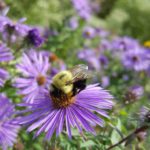
New York State is home to 35,500 farms and 7 million acres of agricultural production that depend on insect pollination. In addition to managed bee colonies, New York State has 450 wild bee species including the squash bee, eastern bumblebee, and leaf cutter bee that are important crop pollinators. Surveys have found that over 100 species of wild bees pollinate and help produce New York’s apples, squash, pumpkins, strawberries, cherries and peaches.
Pollinators Are in Trouble in New York State and Globally
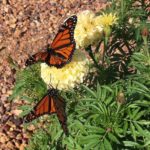
The iconic monarch butterfly migrates through New York City from June through October as part of its 3,000 mile journey from Canada to Mexico, though its numbers have declined by 90% in the last 20 years; and, in 2017, the North American rusty patched bumble bee made it onto the Endangered Species List. Overuse of pesticides, disease, habitat loss and fragmentation, and climate change– which is disrupting flowering cycles and making essential food sources less reliable – have all been identified as culprits in global pollinator declines. Over the past several years, New York State has lost over 50% of its managed bee colonies. Numbers of wild pollinators have declined as well and have especially been impacted by loss of habitat.
NYC Public School Students in NWF Eco-Schools Are Restoring Pollinator Habitat
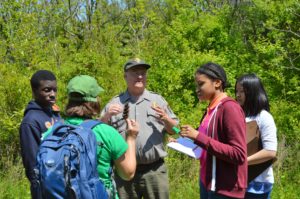
Since 2014, NWF’s Growing a Wild NYC program has educated 2,000 NYC public school students – from Kindergarten to High School – about the importance of pollinators and the causes of their decline. The program is a partnership with the National Park Service/Gateway National Recreation Area, The NYC Department of Education, The Battery Conservancy, The Greenbelt Native Plant Center, Groundwork Hudson Valley, Green Earth Urban Gardens, and others.
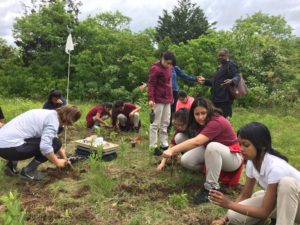
Through a year-long progression of nature-based classroom and field lessons, Growing a Wild NYC moves students from education to action by enlisting their help in restoring native pollinator habitat in local parks and schoolyard gardens. To date, students and their teachers have planted thousands of native flowering plants at the Jamaica Bay Wildlife Refuge in Queens, Floyd Bennett Field in Brooklyn, Battery Park in Manhattan, and in their schoolyards. NWF would like every school to have a pollinator garden and see every NYC student get outside to plant for pollinators: in parks and community gardens, tree pits, window boxes, planters, and raised beds.
NWF and Daymond John Help Shine a Bright Light on Pollinators
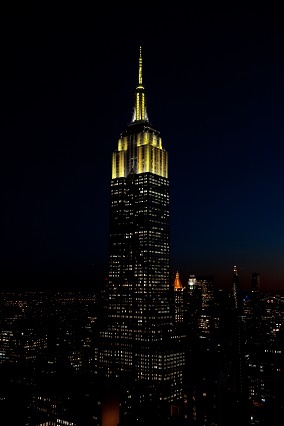
National Pollinator Week (June 19-25, 2017) presents a great opportunity to educate millions of Americans about the plight of our pollinators and get them to take action. When NWF’s NYC staff was looking for creative ways to get the word out, we looked upward.
Soaring 1,454 feet above Midtown Manhattan (from base to antenna), the Empire State Building is one of the world’s most famous and beloved buildings. Empire State Realty Trust, Inc., which owns the Empire State Building, allows organizations to promote their cause-oriented messaging through the lighting of the iconic building – a building which hosts the clothing company of the most famous beekeeping Shark! What better way to get the word out? We reached out to Daymond John and he agreed to flick the switch for pollinators at a ceremonial Lighting Event on June 22nd that will turn the Empire State Building yellow and black at 8:31pm that evening.
You Can Help Pollinators in the Big Apple
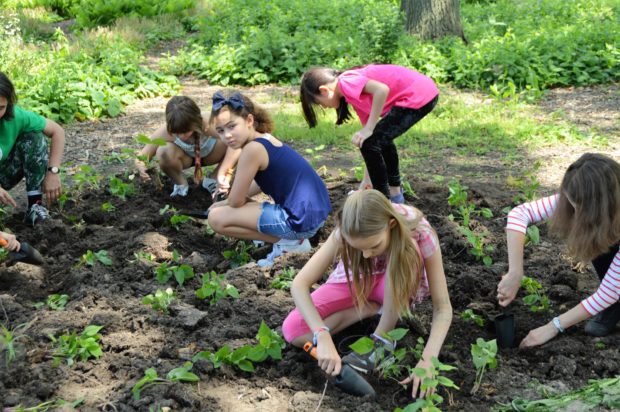
The lighting of the Empire State Building for pollinators is more than just a symbolic act; it’s a way to shine a bright light on the efforts of individuals like Daymond John, and on programs like NWF’s Growing a Wild NYC that are at the forefront of helping pollinators thrive in urban landscapes. Indeed, international research scientists say that cities – with their diverse parks, green roofs, community plots, and small urban gardens – can play a major role in helping insect pollinators survive. City dwellers can pledge to help pollinators in a variety of ways.
Anyone who wants to help NWF’s Growing a Wild NYC program expand and reach thousands more students across all five boroughs can make a donation to the program. Learn more here. Whatever you decide to do, look to the skyline in NYC on June 22nd and say thanks to the bees, birds, butterflies and bats around the world who work tirelessly (and for no pay) to provide us with food, a healthy environment, and a vibrant economy!





















